Meet the Faruqui 5
-

Tasha
Wife • Mother • Pediatrician • Zodiac-Obsessed Pisces • Lover of Transcendental Meditation • Dances Anytime, Anywhere
-

Safi
Husband • Father • Orthopedic Hand Surgeon • Former U.S. Navy • Lover of EDM & Hip Hop Music • Likes to Keep Things Chill
-

Yasmeen
15-Years-Old • Swimmer • Singer • Jewelry-Maker • Gemstone Lover • Reader • Non-Stop Dreamer • Obsessed with Cats
-

Soraya
12-Years-Old • Gryffindor • Makeup & Skincare Guru • Acrylic Nail Connoisseur • Lover of Vanilla Lattes • Fashionista
-

Leena
10-Years-Old • Dancing Queen • Singer • Dog Lover • Expert Birthday Card Maker • Olivia Rodrigo's Biggest Fan
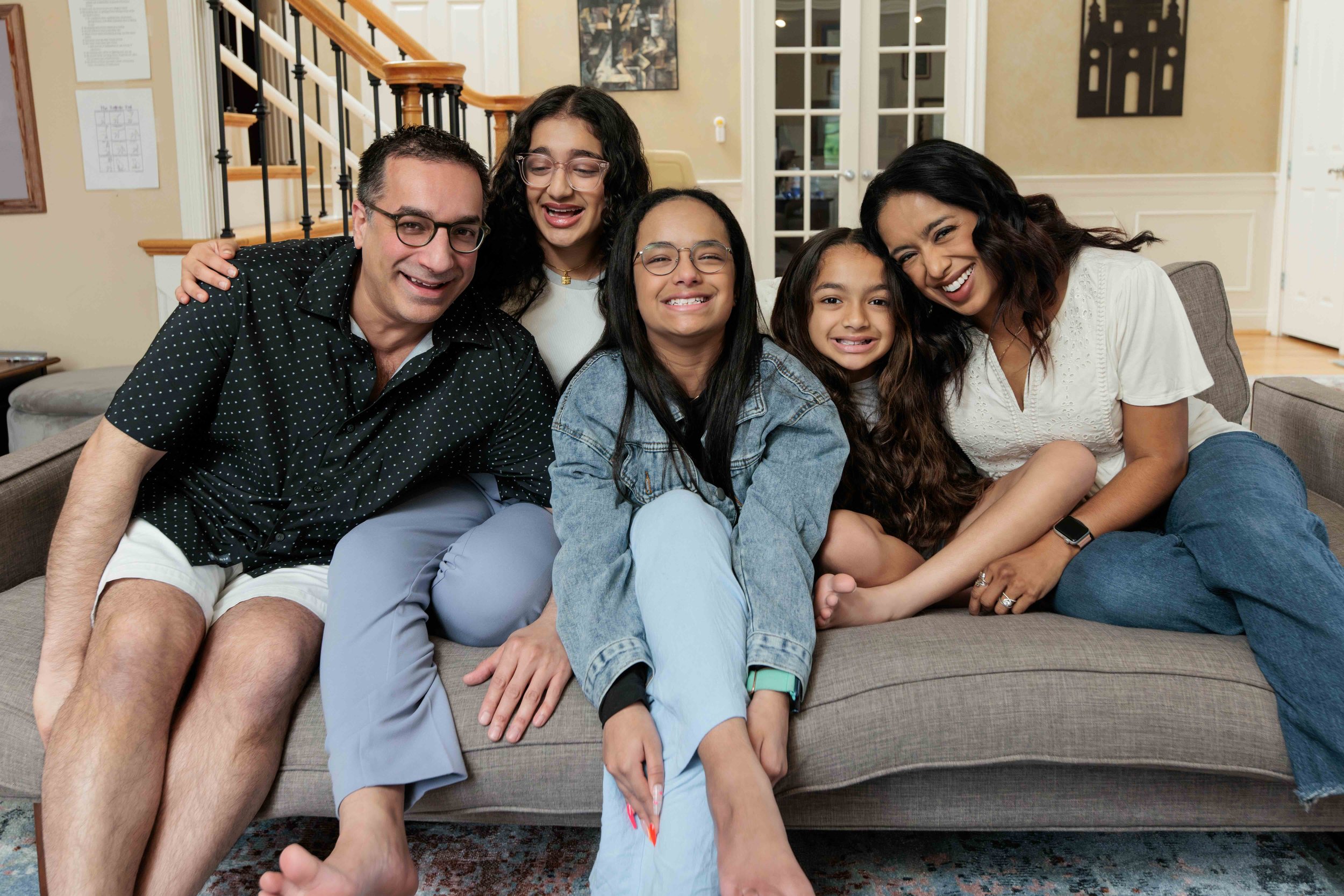




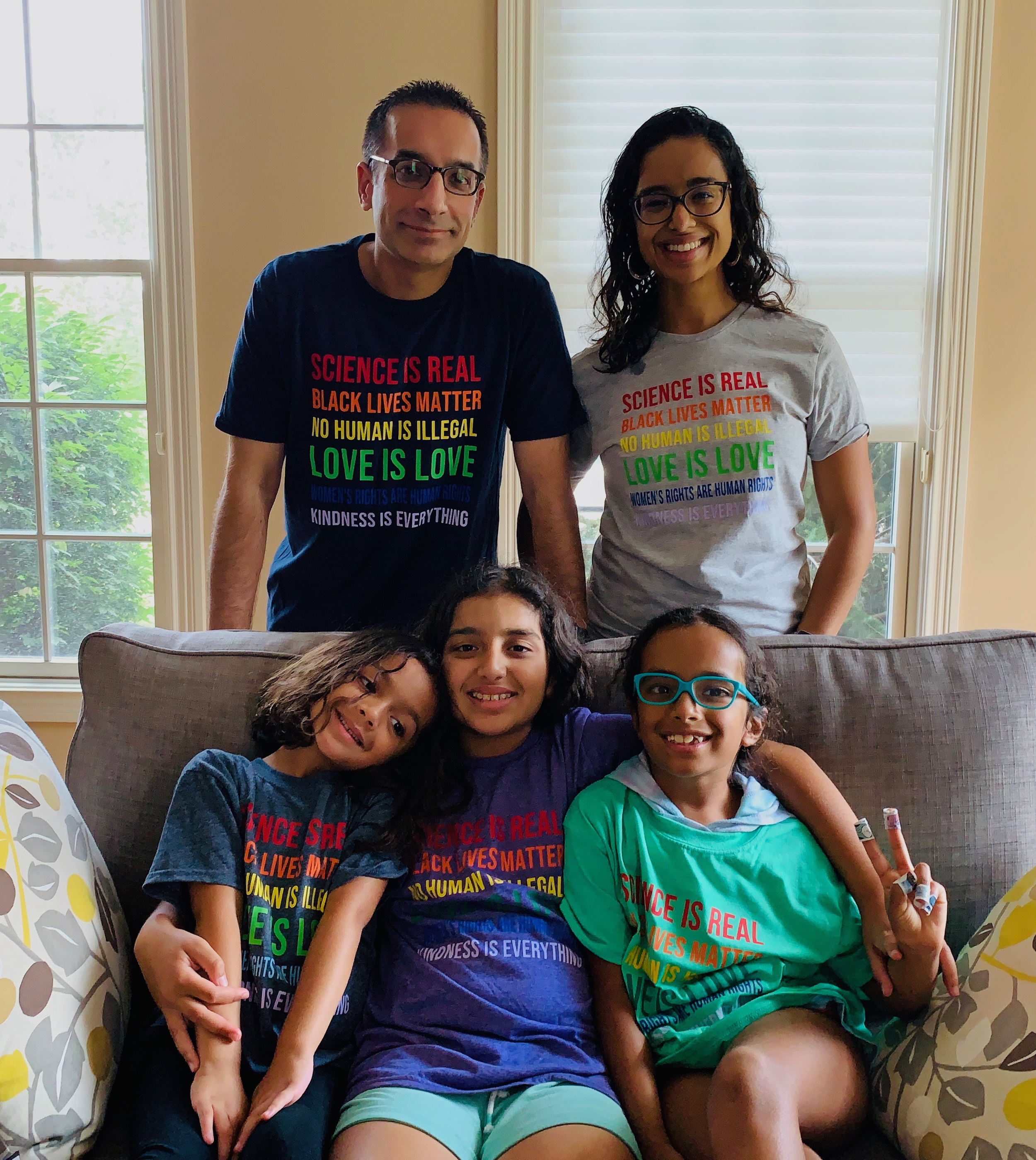






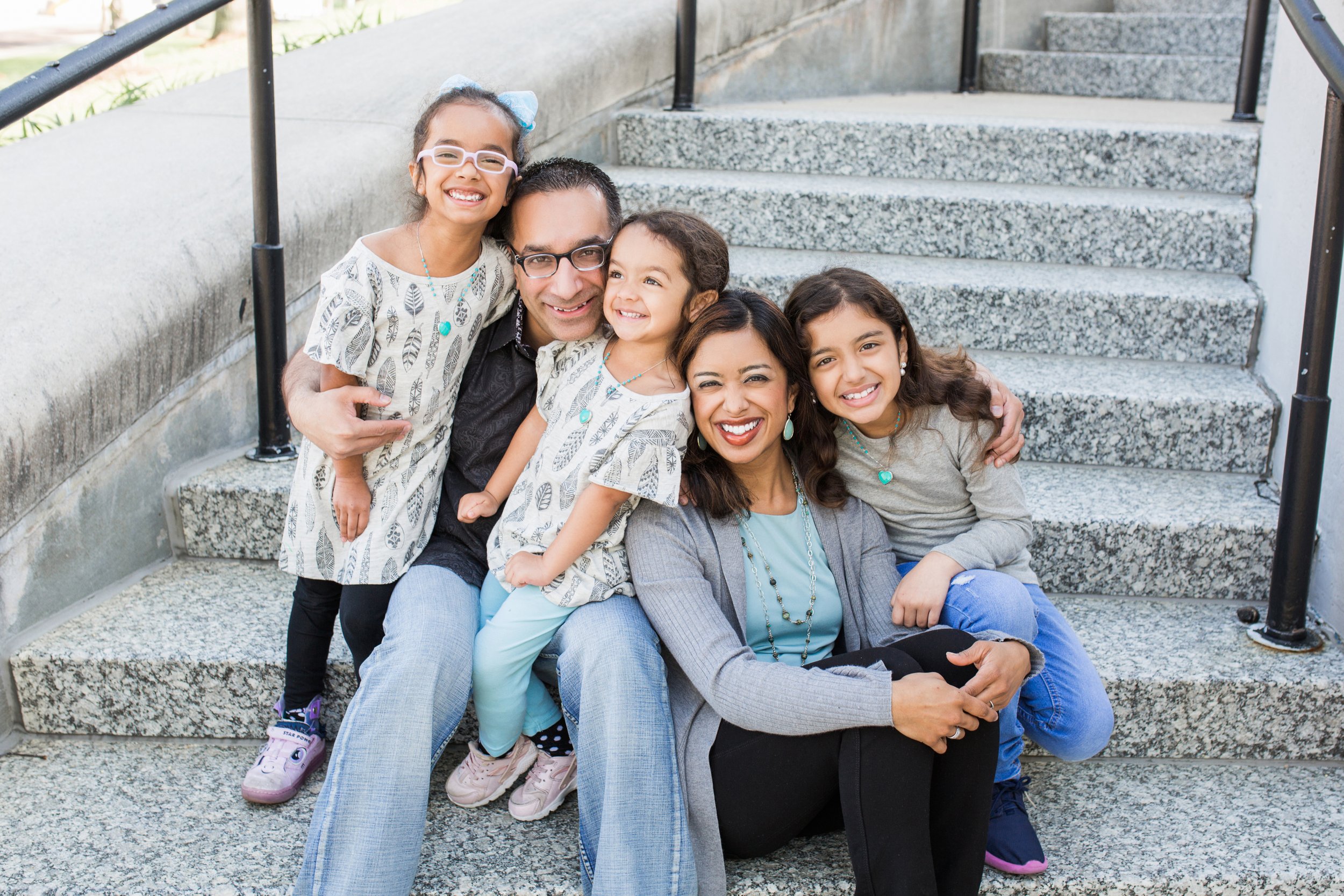

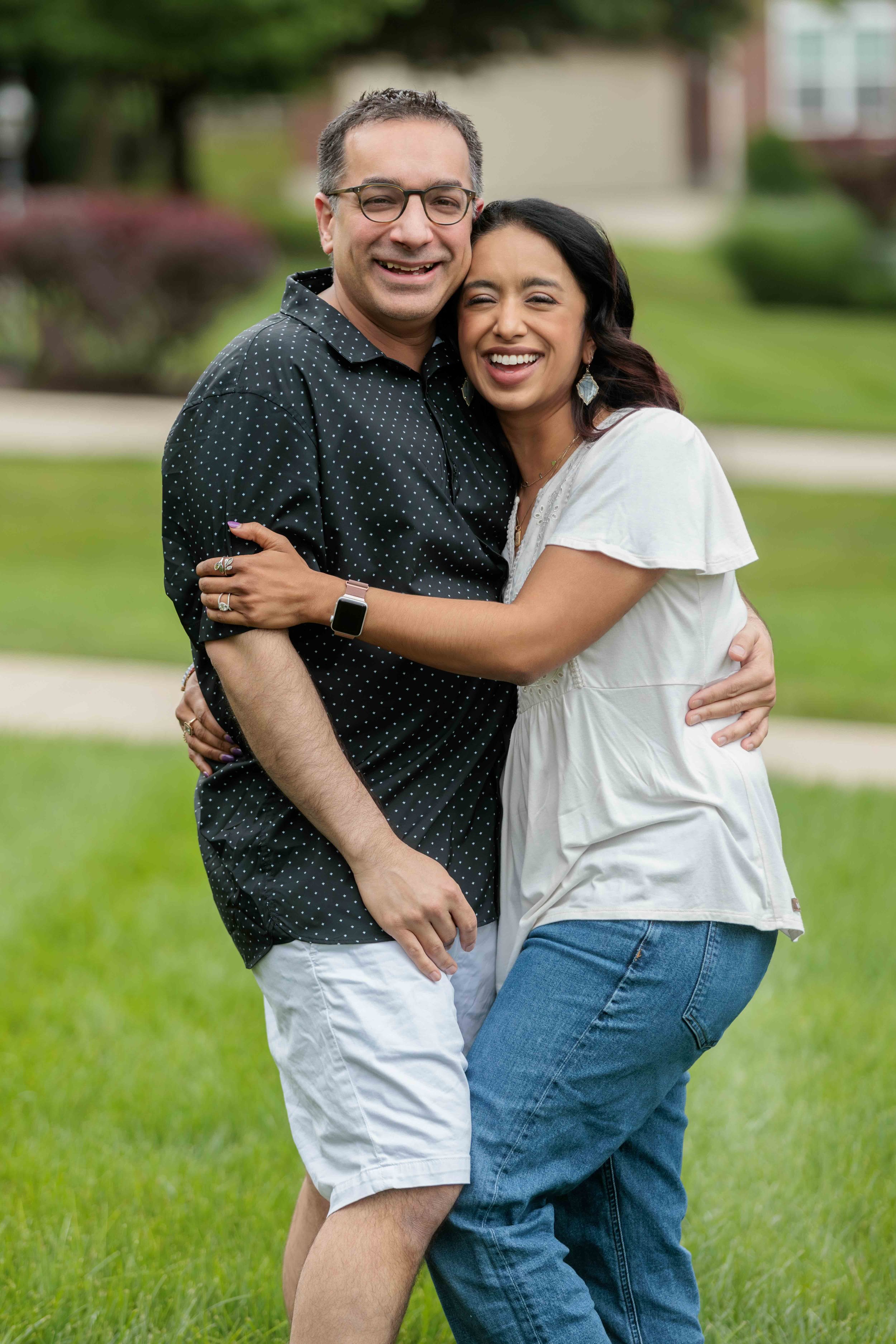

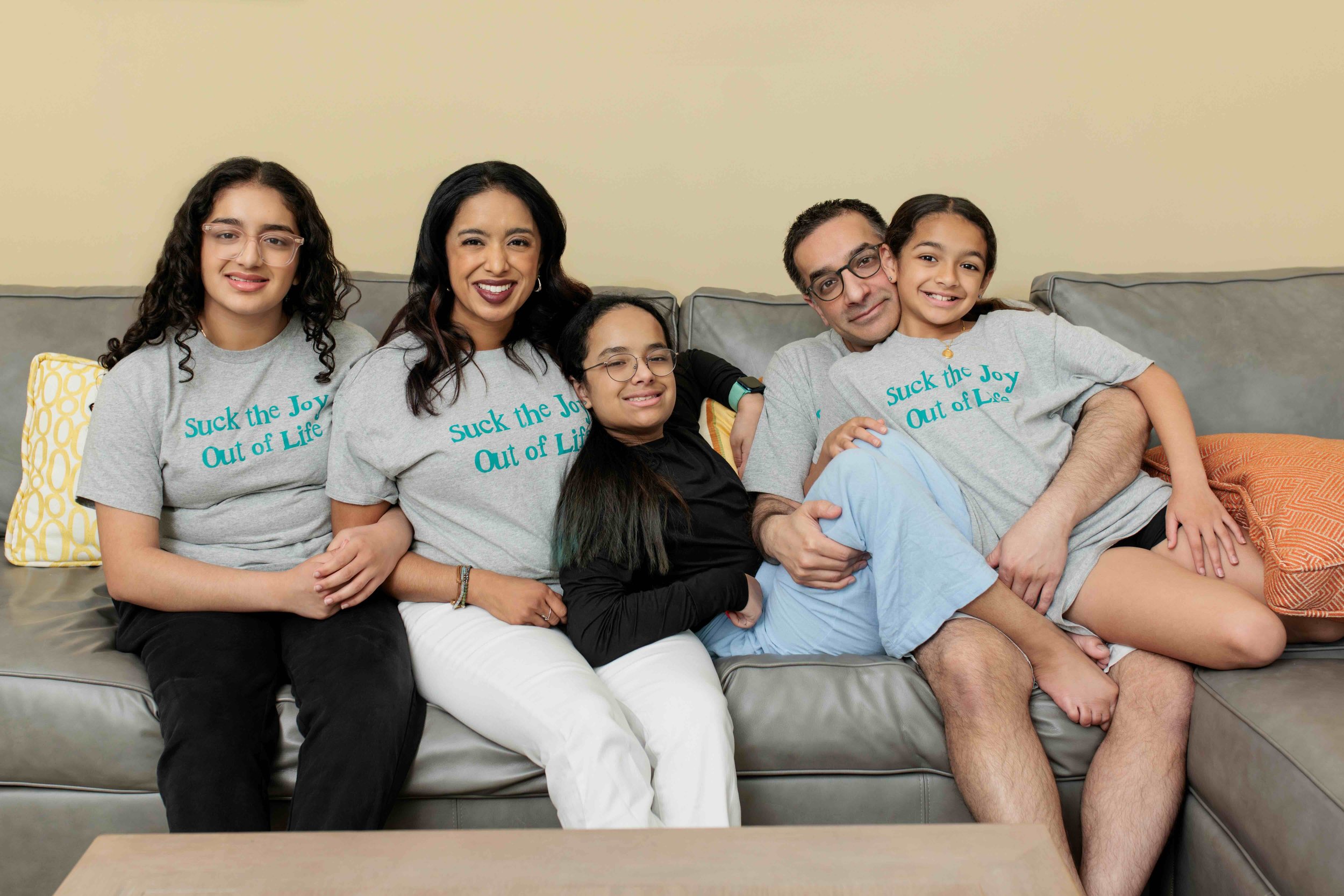

Soraya’s Story
When Soraya was born,
she was considered small for gestational age. Her tone felt floppy and her movements seemed uncoordinated. She was fussy and irritable all the time and made strange noises when she was feeding. I was left wondering, what is going on with you, little baby?
The pediatrician assured Safi and I that we had nothing to worry about, but I just could not shake the feeling that something was really wrong with our beautiful second born child.
By her 4-month checkup,
Soraya was diagnosed with failure to thrive. In addition to feeding difficulties, frequent illnesses, muscular incoordination, and lack of weight gain, she was showing signs of global developmental delay.
A swallow study revealed that Soraya was aspirating; all the fluid we were feeding her was going straight into her lungs.
“You have a long road ahead,” the doctor told us.
At 6-months-old,
Soraya was so far off the growth chart that a G-tube (a surgically-implanted tube that runs from the abdomen into the stomach) was an absolute necessity. There was no other option. We still had many, many tests and appointments ahead to determine what was causing Soraya’s health problems, and she needed nutrition now.
Our search for a diagnosis truly began.
The ever-expanding list of doctors and specialists we’d been told to consult had zero answers regarding what could be causing Soraya’s health problems. Everything she was tested for came back negative. Her labs didn’t reveal any big red flags, and neurology was at an equal loss.
No one had a clue how to help our beautiful little girl.
By Soraya’s 1st birthday,
she had been in physical therapy, occupational therapy, speech and feeding therapy for 6 months and had made some great progress!
Though she wasn’t meeting milestones within the conventional timeframe, she was slowly gaining skills. We were so proud to see her grow and continued with these therapies for years.
When Soraya was 4-years-old,
we were referred to the Undiagnosed Disease Network due to her lack of diagnosis. Unfortunately, that work up still has not come back with any conclusions to this day.
As a family, we started to come to terms with the fact that we may not get a diagnosis for Soraya’s condition. Her health was stable and we were happy to have her continue to gain skills in her therapies. We loved seeing her sparkly personality shine!
At age 8, things started to change.
Our first clue Soraya’s health status was changing came when we noticed Soraya’s gait was different. She’d started hyperextending at the knee in a way she never had before, giving her an entirely new walking style.
Then she started to mention leg pain here and there. We noticed that she was getting more tired, more quickly than before. Her muscles seemed to become weaker and less able to hold her up. It became harder and harder to deny something was happening on a muscular level in Soraya’s body.
By age 9, she was fatigued all the time.
Walking, playing…everything just seemed like too much work for her now.
To try to determine the cause of Soraya’s fatigue, her pulmonologist ordered a chest CT scan. The findings of that CT scan necessitated a sleep study, which revealed Soraya’s chest muscles were no longer effectively moving air through her lungs.
To help her breathe, she started using a BiPAP ventilator at night.
That same year,
our care team in Cincinnati referred us to the National Institute of Health for a full evaluation. During this visit, Soraya shared that she needed to use her wheelchair—her body was just too tired.
This was a huge change, as Soraya had previously used her wheelchair exclusively when traveling long distances.
At age 10, Soraya entered hospice.
Though still undiagnosed, it became apparent from Soraya’s continued health decline that whatever her condition, it was life-limiting.
This realization was not easy to stomach.
It was evident Soraya and our family would benefit from more integrated care. Entering hospice allowed Soraya to utilize palliative care services like massage therapy and for her siblings to access much-needed support to process what our family was going through.
When she was nearly 11-years-old,
Soraya began attending school half days due to her fatigue. Her BiPAP ventilator use increased from exclusively at night to three 1-hour windows during the day, with additional breathing supports every hour.
Today, Soraya is 12-years-old.
Her condition is still undiagnosed. Though it does not have a name, we know that it looks most similar to ALS.
Things are always changing around here.
Soraya no longer has the energy to attend school, and now uses her wheelchair nearly full time. She relies on her ventilator for breathing support 12-15 hours per day, in addition to needing to take “sips” from it while talking, and we have transitioned to managing her pain with opioids.
Despite the knowledge that she is dying, Soraya continues to suck the joy out of life and imbue each day with meaning, love, laughs, and light.
















